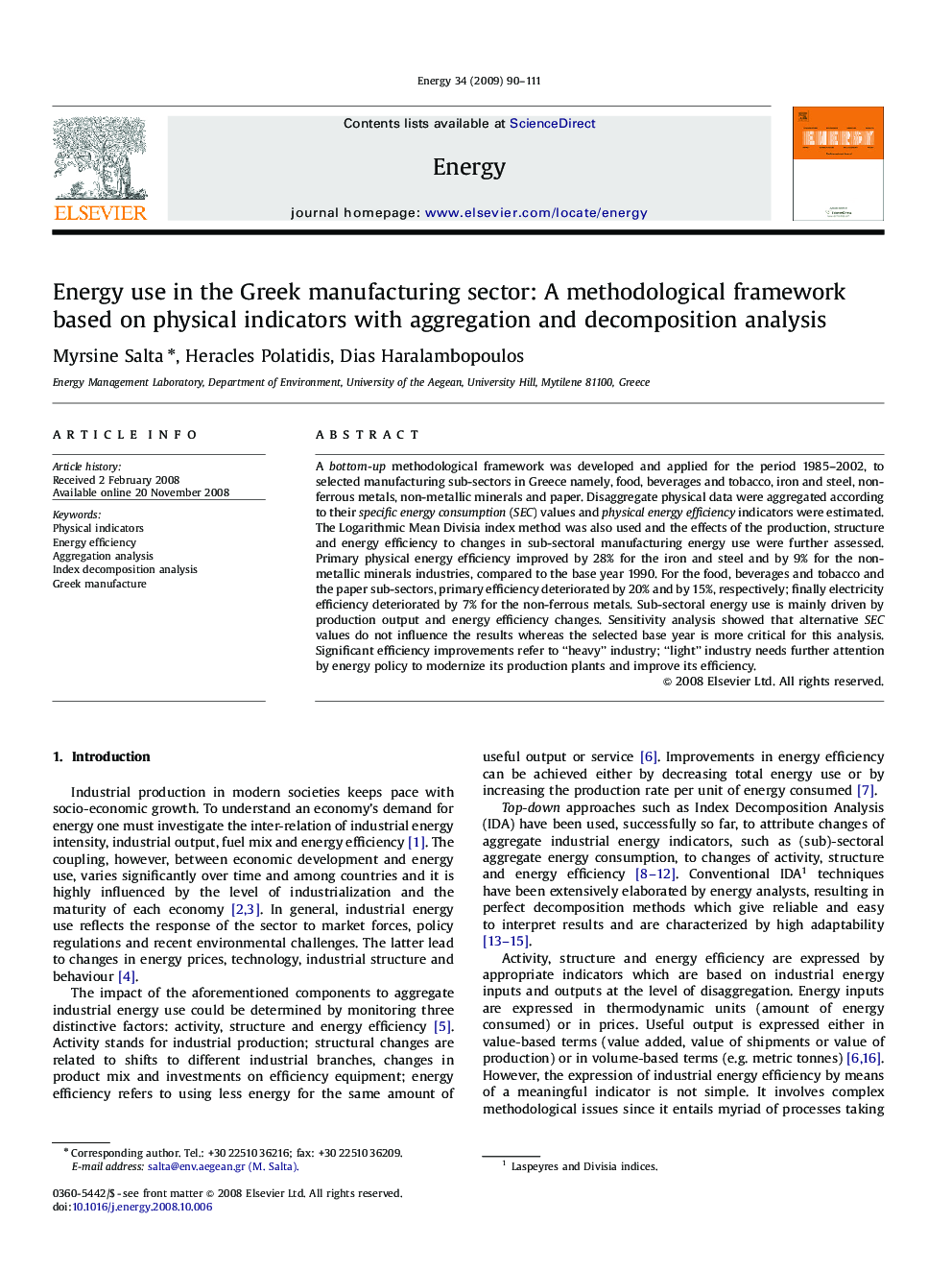| Article ID | Journal | Published Year | Pages | File Type |
|---|---|---|---|---|
| 1735927 | Energy | 2009 | 22 Pages |
A bottom-up methodological framework was developed and applied for the period 1985–2002, to selected manufacturing sub-sectors in Greece namely, food, beverages and tobacco, iron and steel, non-ferrous metals, non-metallic minerals and paper. Disaggregate physical data were aggregated according to their specific energy consumption (SEC) values and physical energy efficiency indicators were estimated. The Logarithmic Mean Divisia index method was also used and the effects of the production, structure and energy efficiency to changes in sub-sectoral manufacturing energy use were further assessed. Primary physical energy efficiency improved by 28% for the iron and steel and by 9% for the non-metallic minerals industries, compared to the base year 1990. For the food, beverages and tobacco and the paper sub-sectors, primary efficiency deteriorated by 20% and by 15%, respectively; finally electricity efficiency deteriorated by 7% for the non-ferrous metals. Sub-sectoral energy use is mainly driven by production output and energy efficiency changes. Sensitivity analysis showed that alternative SEC values do not influence the results whereas the selected base year is more critical for this analysis. Significant efficiency improvements refer to “heavy” industry; “light” industry needs further attention by energy policy to modernize its production plants and improve its efficiency.
